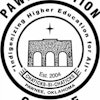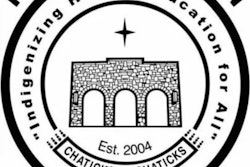Connecting the Disconnected
The Internet to the Hogan project will provide Web access to residents of a Navajo reservation.
By Mary Annette Pember
“I want to learn how to butcher the computer,” says Dody Begay, explaining her interest in participating in the Navajo Technical College’s new computer and Internet project. This parallel between the traditional Diné skill of sheep butchering and Internet access underscores the importance of the college’s new Internet to the Hogan and Diné Grid Project for the community. Raising sheep has deep roots in Diné culture. Butchering the animal for meat is an essential survival skill, passed down for generations. Begay, who is Navajo — or Diné as they call themselves — joined fellow NTC students and faculty as they conducted a presentation on the project at the annual American Indian Higher Education Consortium (AIHEC) conference in Rapid City, S.D., this spring.
The Internet to the Hogan project will provide Internet access to residents of the Navajo reservation who may have never had access to personal phones or electricity in their homes.
A hogan is a traditional Diné log home. According to Tom Davis, dean of instruction at the Crownpoint, N.M., college, the project “will end the digital divide in the eastern agency of the Navajo Nation.”
The Navajo reservation, which extends into Arizona, New Mexico and Utah, is slightly larger than West Virginia, covering more than 27,000 square miles. Road access to these communities, among the poorest in the nation, is often limited, and it’s not uncommon for reservation residents to travel more than 10 miles to draw water or use a telephone. Architects of the project say they hope that by narrowing or closing the digital divide, they can help spur advances in education, economics, health care and public safety.















